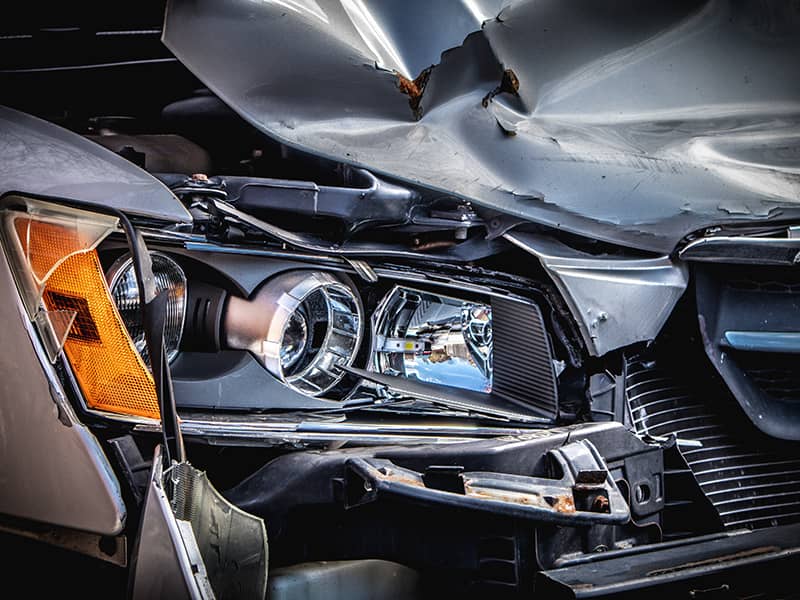
When a car accident happens, one or more people are at fault for the crash.
The responsible person has to deal with the consequences of their actions, and their insurance company has to pay for the victim’s damages.
Sometimes determining fault in an accident is easy. Other times, it’s unclear as to who caused the wreck.
After accidents, car insurance companies attempt determine who is at fault. They will review the evidence to establish if someone was negligent or if several drivers were responsible for the accident.
This is not, however, determinative of your case. A personal injury attorney can help navigate these waters to preserve evidence and determine who actually caused an accident. Ultimately, this decision could be left up to a jury, however if handled properly you and your attorney can present a strong case showing someone else was at fault for the accident, leading to a settlement agreement.
An auto accident can happen to anyone, so it’s helpful to learn about fault and negligence. Understanding these concepts can help you advocate for yourself if you’ve been involved in an accident.
We at DP Injury Attorneys will help you navigate the legal system after a California car accident. We’ll fight for your right to financial compensation and ensure that the other insurance company doesn’t wrongly accuse you of being responsible for the accident.
Call a personal injury lawyer at DP Injury Attorneys to schedule a free consultation today if you’ve been in a car accident in San Diego, CA.
In a personal injury case, fault refers to who caused the accident. Establishing fault determines who is responsible for the victim’s damages.
Sometimes this process is easy. For example, if a police report shows that a drunk driver caused a major collision, there’s evidence proving the drunk driver is at fault.
Sometimes a driver is entirely at fault, while in other cases, two or more drivers might be at fault for an accident. If one driver caused over half of the accident, they’d likely be responsible for the entire crash. It’s important to establish fault in a car accident because fault determines who’s financially responsible for all of the damages.
Here are three methods insurance adjusters use to establish car accident fault.
Police officers arrive at the scene of an accident to help the people involved in the crash and create a police report. They analyze what happened, evaluate if any traffic laws were violated, and record any injured people or damaged property.
Then, they compile this evidence in a police report. The insurance company can look at the police report to determine who is at fault for the accident.
The insurance adjuster can also analyze physical evidence to establish fault. They might visit the scene of the accident to review skid marks, or they could look at the damage to the cars.
For example, the adjuster can look at photos from where the accident occurred and vehicle damage to determine what happened and who was responsible.
Adjusters might speak to eyewitnesses to learn more about what happened during the accident. If several witnesses come to the same conclusion, the insurance company can use their accounts to determine fault. Eyewitness accounts, although not always entirely accurate, can be beneficial if the fault isn’t apparent when looking at the police report or physical evidence.
States use three common types of negligence when looking at personal injury cases.
States that use contributory negligence, or pure negligence, determine that if a driver was negligent in an accident in any way, they’re responsible for all the damages they caused.
Additionally, they will receive no compensation for any damages done to themselves.
Comparative negligence is when states use a weighted percentage to assign fault to those who were in a car accident.
For example, if a driver was responsible for 60% of the accident, their insurance company must pay for 60% of the damages.
California follows a comparative negligence standard.
Finally, if you’re in a state that follows modified comparative negligence and you’re 50% or more at fault for the accident, you won’t receive financial compensation for your damages.
On the other hand, if you’re less than 50% at fault, you earn compensation for the damage you caused.
Car accidents can be downright devastating. It can result in serious injuries, high medical bills, and lost wages. After an accident, you must be financially compensated for your damages. That’s how a personal injury lawyer can help you.
They can compile evidence to prove that the other driver was responsible for your damages. If the other insurance company claims you’re at fault, a personal injury attorney will defend you and prove negligence from the at-fault party.
The legal team at DP Injury Attorneys will guide and support you. We’ll make sure that you earn maximum compensation for your damages.
If you or a loved one has been injured in a car accident in San Diego, call us and schedule a free consultation today.